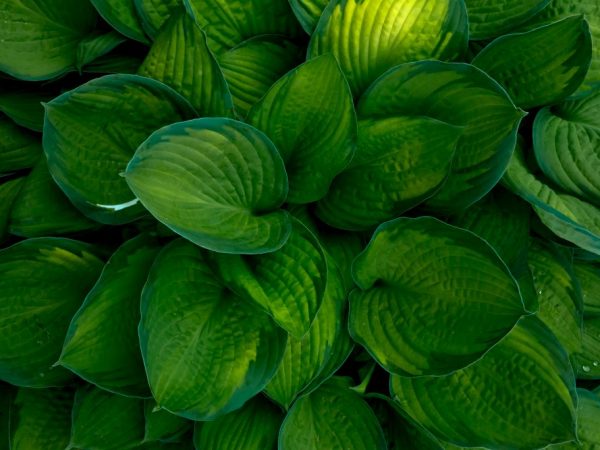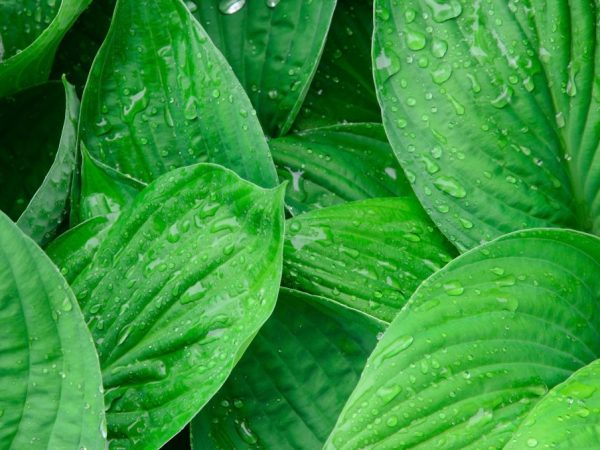Transfer hosts in August
A popular perennial plant with wide leaves of the host, it belongs to the ornamental plant. Hosta is an unpretentious plant of the lily family, it requires special care. Transplanting hosts in August is the most important rule.

Transfer hosts in August
Landing hosts
Despite the fact that this plant is unpretentious, it is worth considering some features when planting:
- hosta - a flower growing in the middle lane, it firmly endures low temperatures;
- the plant is also suitable for hot regions, it easily tolerates drought, but it is preferable to choose shaded places for planting;
- does not like frequent transplants, the best option: once every 5-6 years, in the first year after planting, it is better not to divide the plant - the hosta will weaken greatly;
- the perennial has several varieties, some of them cannot stand contact with direct sunlight;
- does not like waterlogging of the soil, it is worth planting on small hills, and in places where groundwater is located close to it, they provide good drainage;
- planting times for some species are very short, so the work should not be postponed until later.
Summer transfer
Changing the habitat of a plant is rarely carried out, often this is done when planting new flowers or according to changes in the landscape.
The dug out hosta quickly loses its decorative effect, it will take a long time to build up the leaf mass. Transplant the plant no more than once every 5 years and only in extreme cases:
- with a strong thickening of perennial grass;
- in cases where it is necessary to save the host from pests or disease;
- during plant propagation.
It is better to move the hosts in the second half of the summer, August is well suited. After the growing season, the shrub grows stronger and tolerates stress more easily. There are varieties of perennials that require transplantation only during this period - Siebold and Tokudama, this is due to the device of the root system of the varieties.
Before replanting perennial grass to another place, it is worth planning everything. The main thing is the terms, they are different for each region. For the middle lane, the optimal time is the beginning of August and the end of September, in the south the best period is mid-August. The duration of this period is affected by the onset of cold weather: a perennial cannot instantly adapt; it takes at least a month to restore the root system.
Beginning of work
Before replanting this herb, it is worth preparing the site.
A perennial thrives on almost any soil, but it is best to avoid excessive dampness and waterlogging, as well as clay.
Preparatory activities before landing:
- The planting area for the flower is dug up, all weeds and roots are removed.
- If the soil is predominantly sandy, add peat and humus.
- River sand improves the conductivity of water to the roots in heavy soil; when digging, it is mixed with the soil, it is important not to overdo it.
- If the land is too poor, add humus, mineral fertilizers and ash.
Site selection is just as important as soil preparation. Hosta is a shrub that loves shade.He will feel good in the company of other perennial plantings, not far from trees.
Before transplanting a flower, the flower bed is abundantly shed a few hours before active action. A little potassium permanganate is added to the water.
Stages

The plant loves shade
Flower transplantation activities begin with the preparation of the hole, drainage must be laid on its bottom. You can use brick chips, fragments of clay pots, commercially available volcanic stone or rubble. Then all the other stages of moving the flower to a new place are performed.
Correct transplant in August:
- The shrub is dug out carefully, trying to capture as many roots as possible. The earthen lump from the resulting hole is pulled out smoothly. The roots are cleaned of old soil, washed and carefully examined. If there are affected parts, they are carefully cut off with a sharp knife and dipped in a garden pitch, sprinkling with ashes.
- Perennial rejuvenation includes cutting off excessively long rhizomes, the bush is divided into several parts. It is easier to manipulate with a pruner or a sharp knife, so the flower will experience less stress than breaking it with your hands. After dividing, the cut is treated with a fungicide.
- The bottom of the hole is additionally sprinkled with humus, you can throw in last year's foliage, then a seedling is immersed in it, the roots are straightened and sprinkled with earth. The root collar is not exposed, but it is not buried too deeply, the ideal position is at ground level. They mulch on top with fallen leaves or humus, and take dry grass.
If there are several bushes on the site at once, it is worthwhile to provide more space than for other plantings. The perennial grows strongly, the optimal distance between the holes is 1 m.
Errors
If, after transferring the hosts to another place on the site, it begins to hurt, then gross mistakes were made in the process:
- fertilizer cannot be applied immediately after planting. The roots are restored after stress, the bait will negatively affect the condition of the flower;
- covering material for mulching is designed to retain heat and create a favorable microclimate for the root system. Tightness is contraindicated, polyethylene cannot be used;
- if there are a lot of wilted leaves, the flower looks bad, the event is postponed from August to spring. During the winter, the plant will gain strength and calmly endure stress.
In addition, slugs can affect the plant. If you do not sprinkle ash on the soil, they will begin to actively multiply and eat the leaves.
Conclusion
One of the wonderful perennials - the hosta - is able to decorate any site. Landscape designers love to use it to fill a large space or decorate the area around artificial reservoirs. Shrubs reproduce by division: having bought one, in a few years it will be possible to grow several large specimens at once. For proper breeding, you need to know how to transplant perennial grass without harming it.

